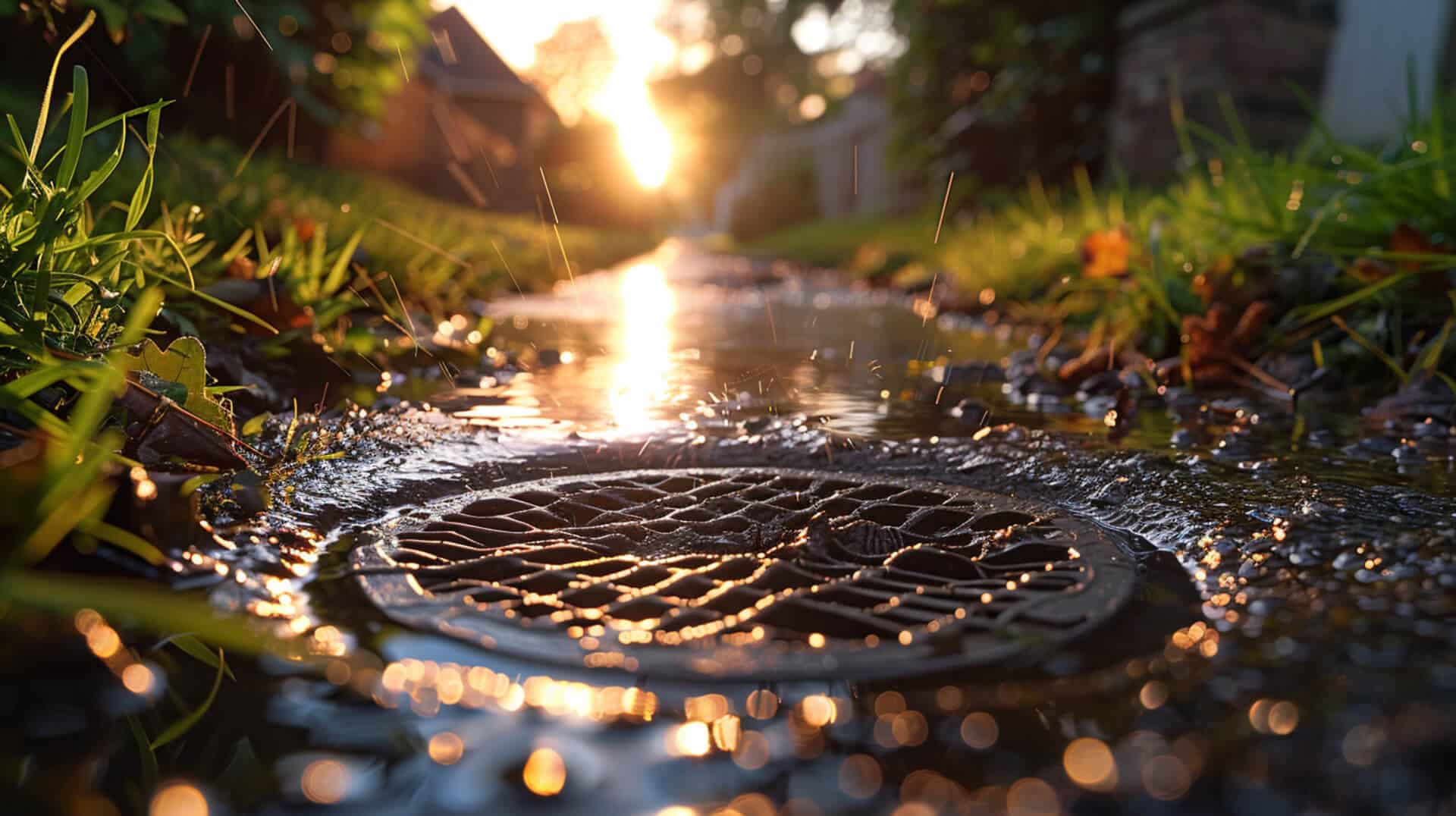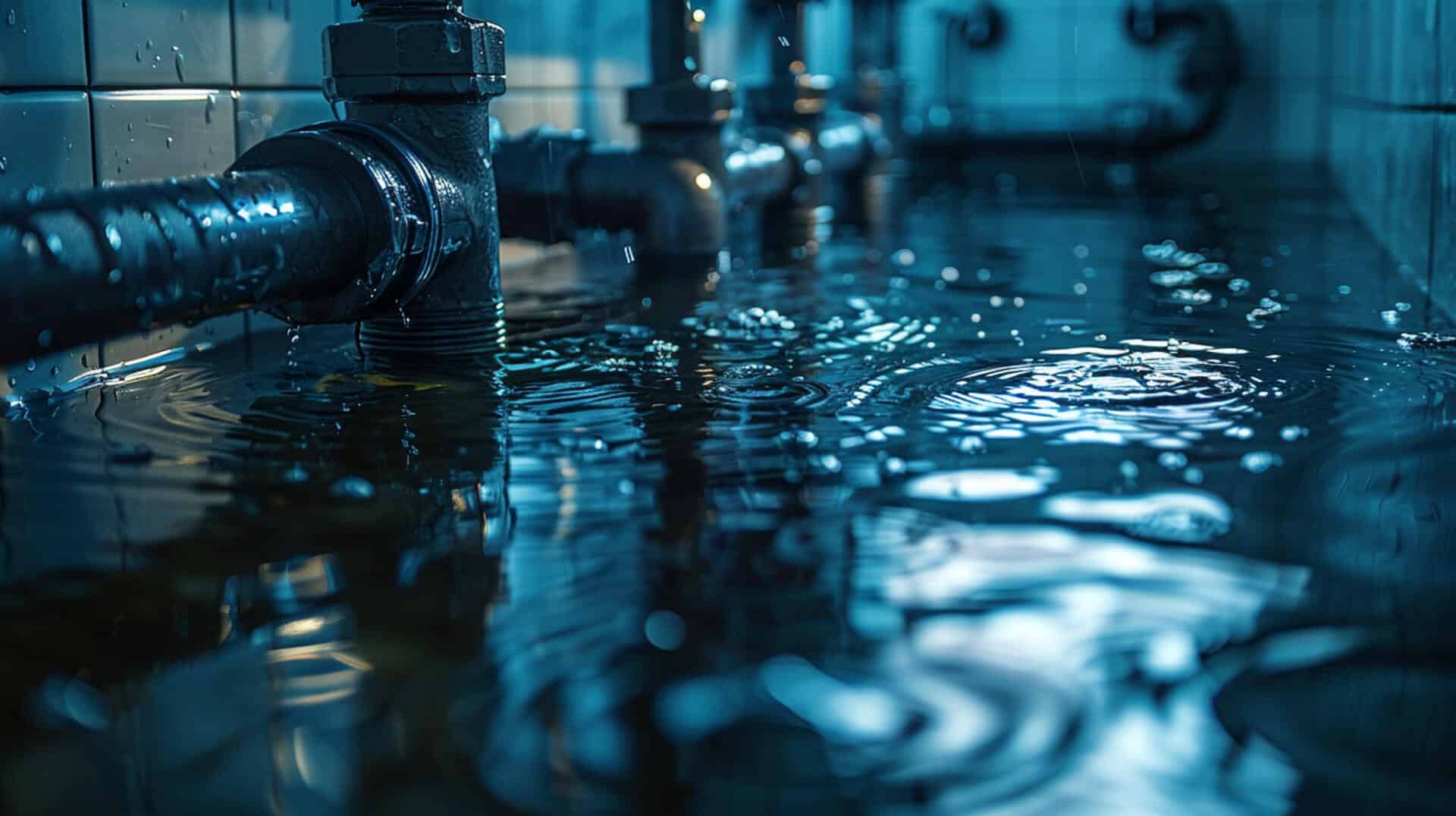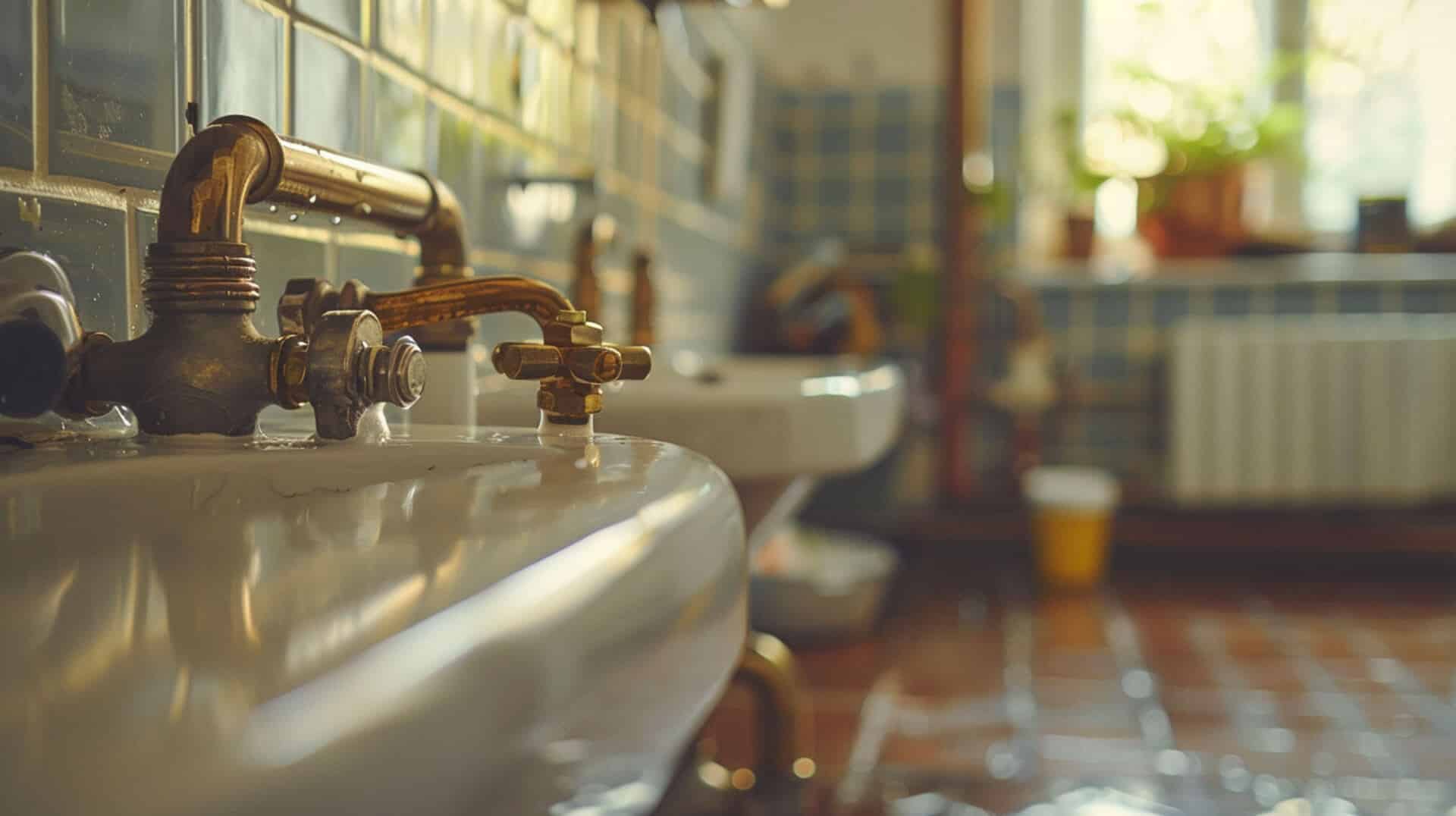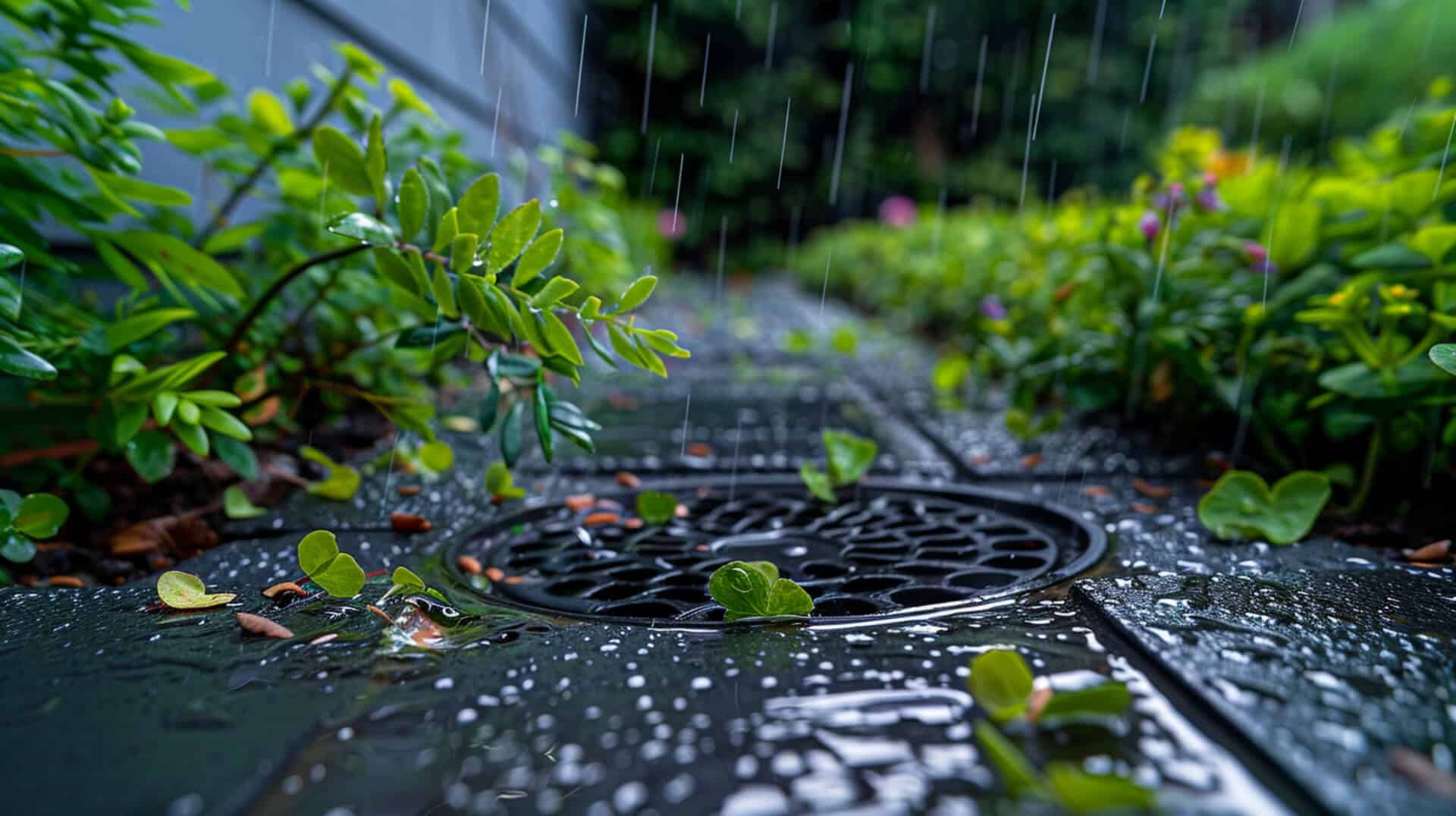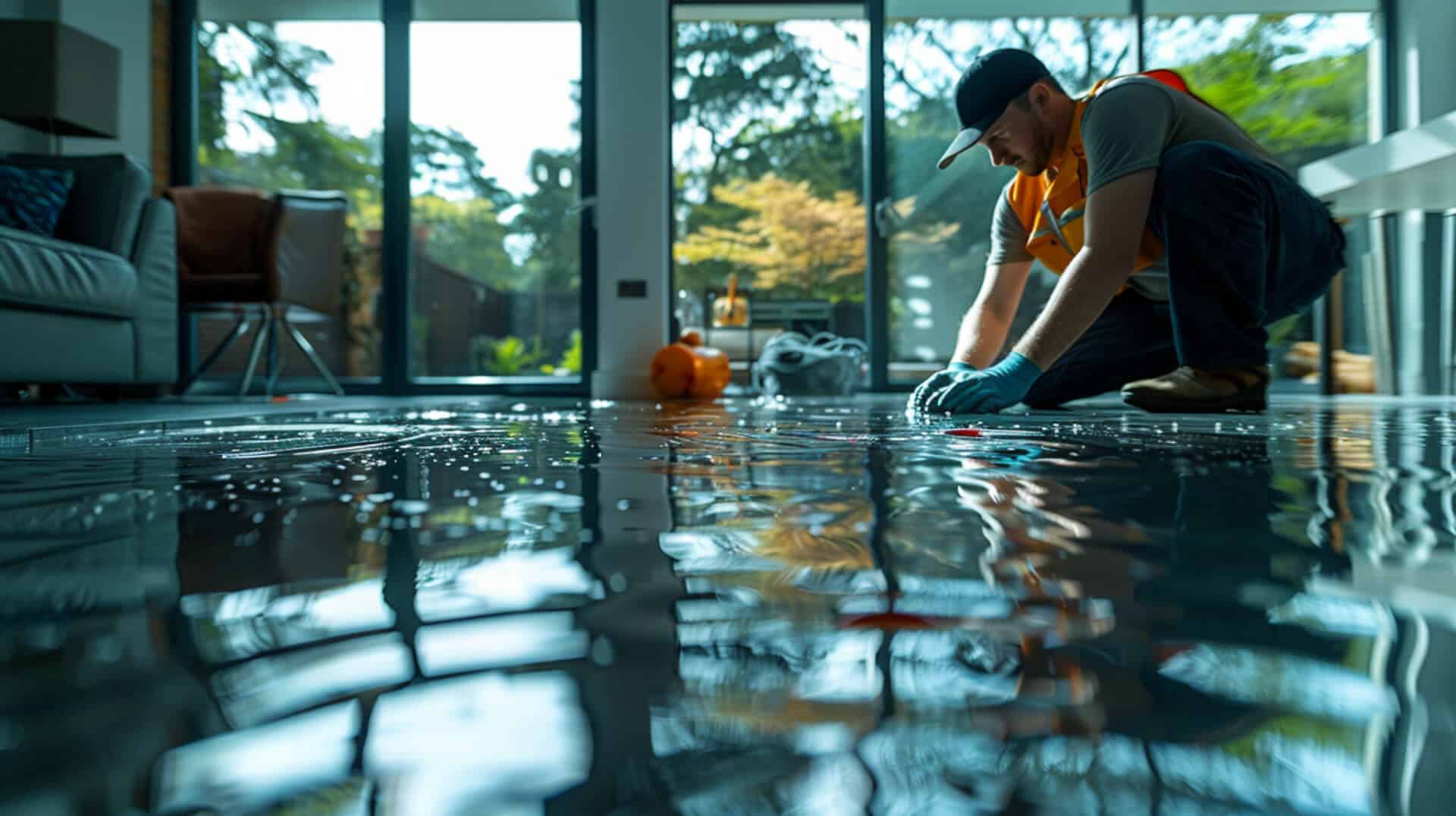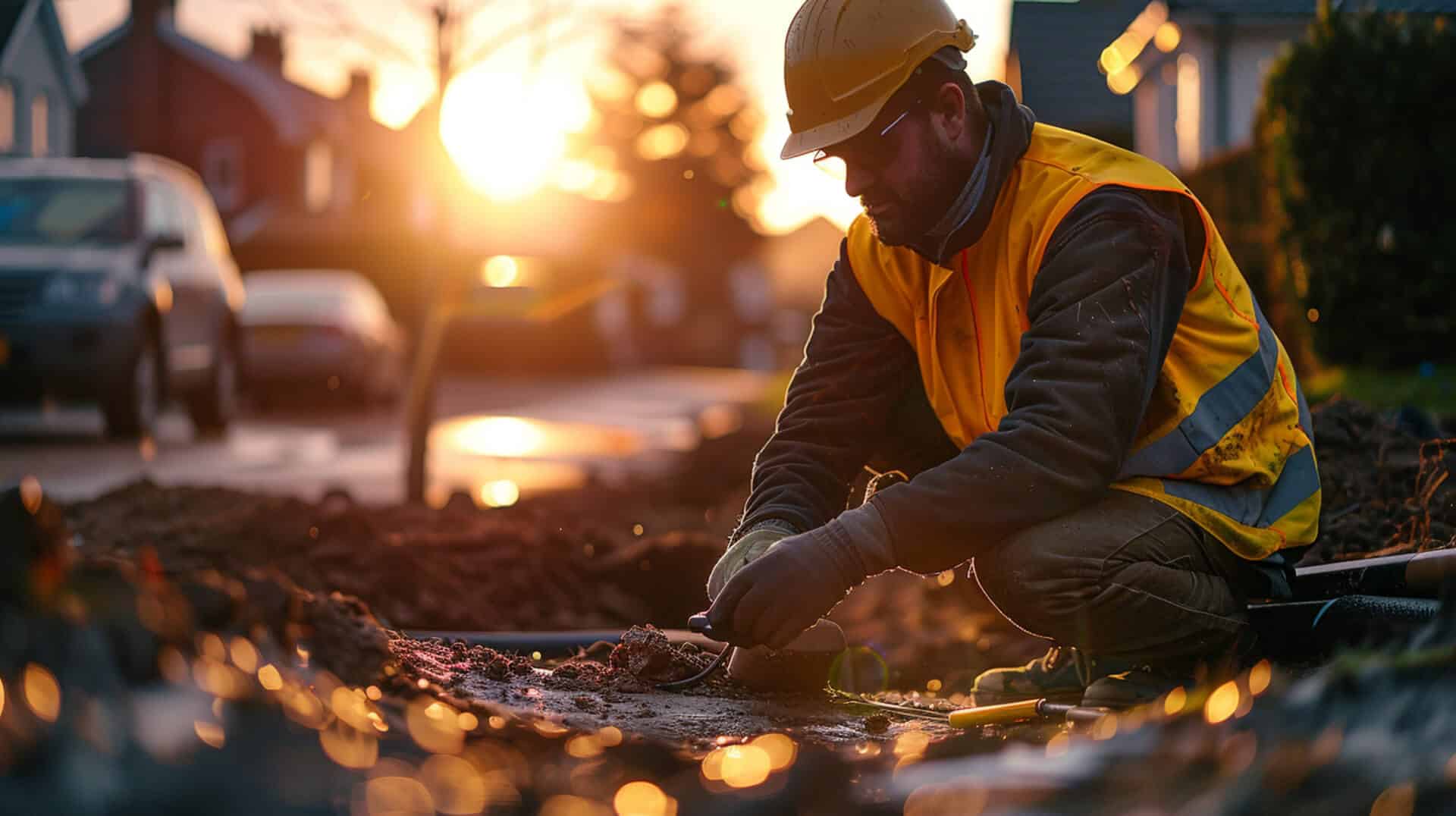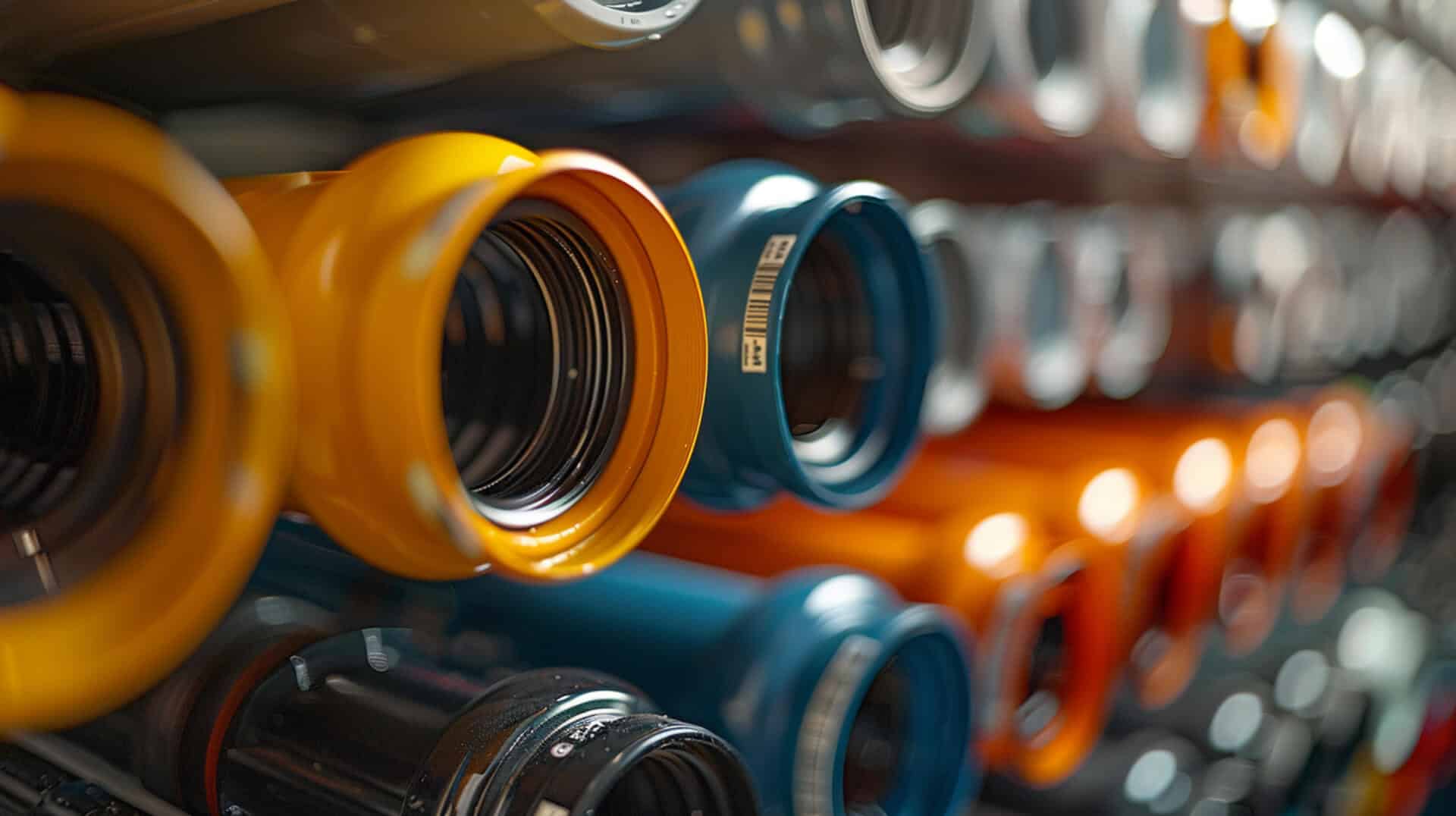 Are there any preventive measures to avoid drain blockages
Are there any preventive measures to avoid drain blockages
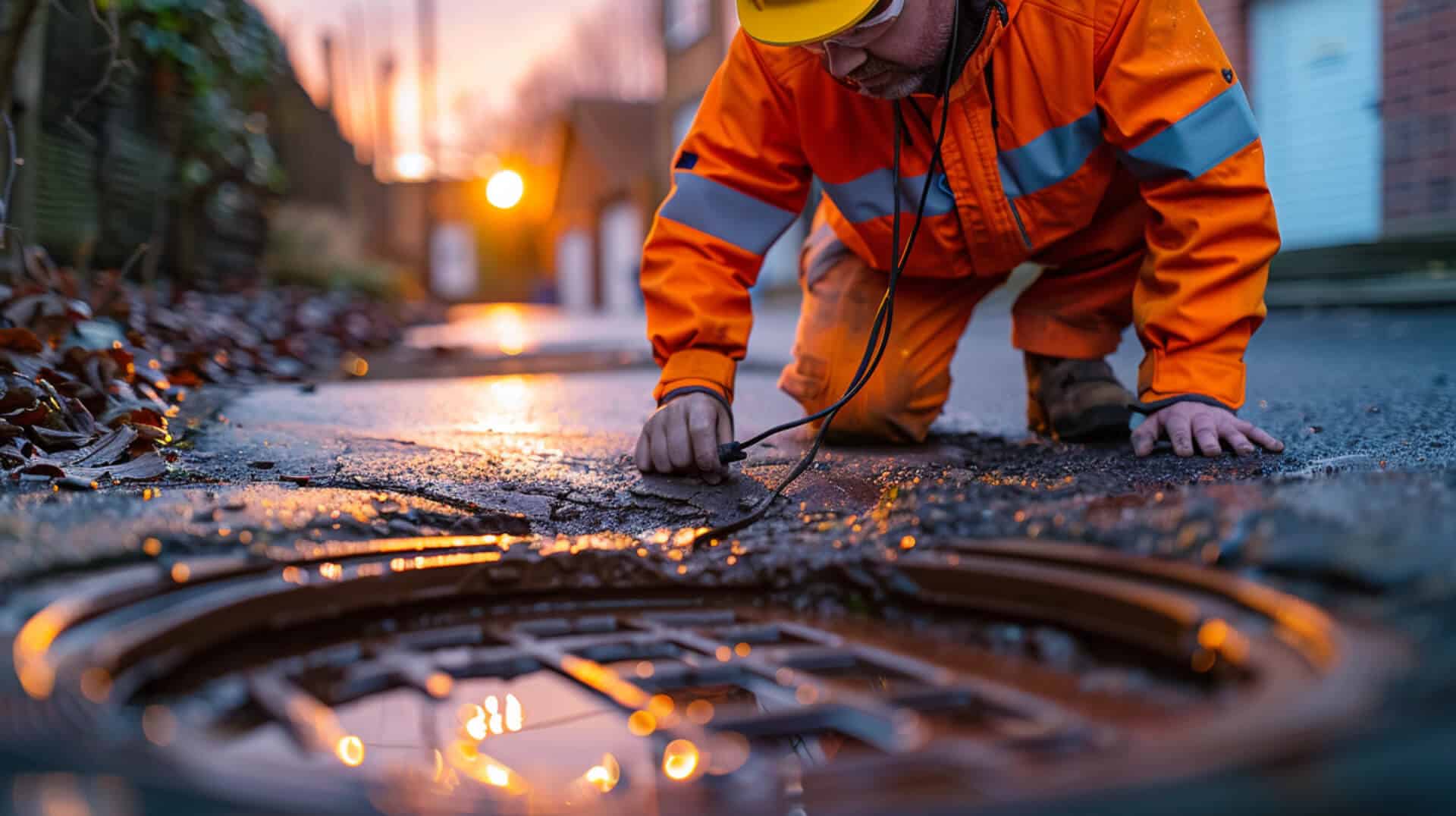
Understanding the primary causes of drain blockages is essential for property owners, business owners, and facility managers. By implementing preventive measures, you can safeguard your property against the inconvenience and potential damage caused by blocked drains. This section will explore the common culprits behind blockages and underscore the importance of proactive maintenance.
Common Causes of Drain Blockages
Blockages in drainage systems are often the result of everyday materials that accumulate over time. Hair, grease, oil, soap scum, food particles, and non-biodegradable items like baby wipes and cotton buds are frequent offenders. Recognising these common causes is the first step in preventing blockages.
The Necessity of Preventive Measures
For those managing properties, the implementation of preventive strategies is not just a matter of convenience but also of cost-efficiency. By preventing blockages, you can avoid the need for emergency repairs, which are often more expensive and disruptive than routine maintenance.
Cost-Saving Solutions and Damage Prevention
A clear understanding of both the causes of blockages and the appropriate solutions can lead to significant cost savings. Regular maintenance and the correct disposal of waste can prevent the buildup that leads to blockages, thereby preserving the integrity of your property’s plumbing system.
Sources of Reliable Information and Professional Advice
Reliable information and professional advice on preventing drain blockages are readily available. Resources range from online articles and tutorials to services provided by professional plumbing companies. These resources can guide you in establishing effective maintenance routines and responding appropriately to drainage issues.
Common Causes of Drain Blockages
Understanding the common culprits behind drain blockages is essential for maintaining a functional drainage system. Residential and commercial drains often face obstructions due to a variety of materials.
Materials Leading to Blockages
The primary materials that cause blockages include:
- Hair: Accumulates over time and tangles into dense masses.
- Grease and Oil: Solidify within pipes, creating stubborn clogs.
- Food Particles: Contribute to blockages, especially when combined with grease.
- Soap Scum: Binds with other debris, exacerbating blockages.
Impact of Non-Biodegradable Items
Non-biodegradable items such as baby wipes and cotton buds are particularly problematic because they do not break down, leading to significant blockages that are challenging to clear without professional intervention.
The Problem with Grease, Oil, and Food Particles
Grease, oil, and food particles are especially troublesome for drains due to their tendency to adhere to pipe walls and solidify, which narrows the pipes and eventually leads to blockages.
Educating Tenants and Employees
Property owners can play a pivotal role in preventing blockages by educating tenants and employees about the causes and encouraging responsible disposal practices. This includes:
- Disposal Tips: Providing information on what should not be flushed or poured down drains.
- Signage: Installing clear signs in kitchens and bathrooms to remind users of best practices.
- Regular Communication: Sending reminders and updates on proper waste disposal methods.
By addressing these factors, you can significantly reduce the risk of drain blockages and maintain a smooth-running drainage system.
The Role of Drain Philtres and Screens
Drain philtres and screens serve as a first line of defence against blockages in your plumbing system. By understanding their function and proper maintenance, you can effectively prevent clogs and maintain the integrity of your drains.
Functionality of Drain Philtres and Screens
Drain philtres and screens are designed to trap debris that could cause blockages. They work by providing a physical barrier that allows water to pass through while capturing solid particles.
Types of Drain Philtres
Various types of drain philtres are available, each suited for different environments:
- Mesh Screens: Ideal for kitchen sinks to catch food particles.
- Perforated Covers: Used in showers and bathtubs to trap hair and soap scum.
- Basket Strainers: Common in commercial settings for larger waste prevention.
Optimal Installation Locations
To maximise utility, instal drain philtres in areas prone to clogs:
- Kitchen Sinks: To catch food waste and prevent grease build-up.
- Bathrooms: In showers, bathtubs, and sinks to trap hair and soap residue.
- Utility Areas: Where debris or fibrous materials might enter the drainage system.
Importance of Regular Maintenance
Regular cleaning and inspection of drain philtres are crucial for their effectiveness. Maintenance involves:
- Routine Cleaning: Remove and clean philtres regularly to prevent buildup.
- Inspection: Check for damage or wear that could compromise their function.
- Replacement: If wear is evident, replace philtres to ensure continued protection against blockages.
By incorporating these preventive measures, you can significantly reduce the likelihood of drain blockages and maintain a smoothly functioning plumbing system.
Best Practices for Disposing of Oils, Fats, and Solid Waste
Proper disposal of oils, fats, and solid waste is critical in preventing drain blockages. These substances can solidify within pipes, leading to clogs that disrupt the drainage system.
Implementing Fat Traps and Grease Management Systems
For property owners, installing fat traps or grease interceptors can be an effective solution. These systems are designed to capture oils and fats before they enter the wastewater system. It is recommended to:
- Assess Needs: Determine the appropriate size and type of system for your property.
- Professional Installation: Engage a qualified plumber to ensure correct installation.
- Regular Maintenance: Schedule routine cleaning to maintain system efficiency.
Importance of Education on Waste Disposal
Educating residents and employees about the consequences of improper disposal and the correct methods to dispose of waste is essential. This includes:
- Information Sessions: Conduct regular meetings or workshops.
- Clear Signage: Post signs near sinks and toilets outlining what should not be disposed of down the drain.
- Written Materials: Provide pamphlets or posters with disposal guidelines.
Resources for Waste Disposal Practices
Resources and services to assist in implementing these practices are available through:
- Local Authorities: Often provide guidelines and support for waste management.
- Environmental Agencies: Offer resources on sustainable disposal methods.
- Plumbing Services: Can advise on and instal appropriate grease management systems.
By following these practices, you can contribute to the longevity of your property’s plumbing system and avoid the inconvenience of blockages.
Implementing Regular Drain Maintenance Routines
Routine maintenance is a cornerstone of preventing drain blockages. By incorporating simple home remedies and scheduling professional services, you can ensure the longevity and efficiency of your property’s drainage system.
Home Remedies for Clear Drains
Several home remedies are effective for maintaining clear drains:
- Boiling Water: A weekly flush with boiling water can help dissolve and dislodge grease buildup.
- Baking Soda and Vinegar: This natural concoction can break down clogs and neutralise odours.
- Enzyme Cleaners: Regular use of enzyme-based cleaners can digest organic matter, preventing blockages.
Scheduling Professional Cleaning and Inspection
Professional drain cleaning and inspection should be scheduled:
- Annually: For residential properties to prevent accumulations that lead to blockages.
- Bi-Annually or Quarterly: For commercial properties due to higher usage and risk of blockages.
Importance of Routine Care
Routine care is crucial for:
- Preventing Clogs: Regular maintenance helps avoid the buildup that causes blockages.
- Identifying Issues Early: Early detection of potential problems can prevent costly repairs.
Recommended Maintenance Practices
Professionals recommend different maintenance practices based on the type of property:
- Residential: Simple home remedies combined with annual professional inspections.
- Commercial: More frequent professional maintenance and the use of commercial-grade cleaners.
By adhering to these maintenance routines, you can effectively prevent drain blockages and maintain a healthy plumbing system.
Recognising the Need for Professional Drain Services
When routine maintenance falls short, it may be time to seek professional drain maintenance services. Recognising the signs that indicate professional intervention is necessary can save you from facing more severe drainage issues.
Indicators of Serious Blockages
Persistent issues that signal the need for professional help include:
- Recurring Clogs: Drains that become clogged repeatedly despite thorough cleaning.
- Slow Drainage: Water draining slowly, indicating a potential deep-set blockage.
- Unusual Noises: Gurgling sounds from pipes can suggest trapped air due to blockages.
- Foul Odours: Persistent bad smells emanating from drains.
Professional Approach to Complex Blockages
Professionals address blockages with a range of specialised tools and techniques:
- High-Pressure Water Jetting: To effectively clear out grease, debris, and roots.
- CCTV Drain Surveys: For accurate diagnosis of the blockage’s location and cause.
- Mechanical Snaking: To dislodge blockages that are beyond the reach of DIY methods.
Expertise in Unadopted Sewers and Lateral Drains
Expertise in unadopted sewers and lateral drains is crucial because these areas often require:
- Specialised Knowledge: Understanding of complex drainage systems not maintained by local authorities.
- Advanced Equipment: Tools to navigate and repair these unique and sometimes intricate systems.
Locating Reputable Drain Maintenance Services
To find reputable services, consider:
- Recommendations: Seek referrals from trusted sources.
- Certifications: Look for professionals with the necessary certifications and good reviews.
- Local Expertise: Choose services with experience in your specific area and type of property.
By identifying the need for professional services and understanding how they can address complex drainage issues, you can ensure the health and longevity of your property’s drainage system.
Educating Tenants and Employees on Waste Disposal
Educational programmes on waste disposal are a proactive approach to preventing drain blockages. By informing tenants and employees about the correct disposal methods, property owners can significantly reduce the risk of clogs and maintain the integrity of their plumbing systems.
Effective Educational Materials
To effectively educate your audience, consider utilising:
- Printed Guides: Distribute flyers and posters with visual cues on what should not go down the drain.
- Digital Resources: Share videos and online articles that demonstrate best practices in waste disposal.
- Workshops: Organise educational sessions to engage and inform participants about the importance of proper waste disposal.
The Necessity of Ongoing Education
Ongoing education is vital for:
- Reinforcing Good Habits: Regular reminders help maintain awareness and prevent complacency.
- Adapting to Changes: Updating educational content as new waste disposal technologies and products become available.
- Building a Culture of Responsibility: Encouraging a shared commitment to maintaining a healthy drainage system.
Stakeholders in Educational Efforts
Involving various stakeholders ensures a comprehensive educational approach:
- Property Management: Should lead the initiative and provide necessary resources.
- Maintenance Staff: Can offer insights into common issues and solutions.
- Tenants and Employees: As the primary users of the facilities, their participation is crucial for the success of the programme.
By investing in education, you’re not only preventing blockages but also promoting a culture of care and responsibility towards your property’s plumbing infrastructure.
Eco-Friendly Solutions for Drain Maintenance
In the pursuit of maintaining clear drains, property owners are increasingly turning to environmentally friendly methods. These sustainable practices not only prevent blockages but also contribute to the overall health of the plumbing system and the environment.
Enzyme Cleaning Sticks and Biodegradable Products
Enzyme cleaning sticks are a popular choice for eco-conscious property managers:
- Function: They release bacteria that consume organic matter, such as grease and food particles, preventing clogs.
- Usage: Regular application as per manufacturer’s instructions can help maintain free-flowing drains.
Biodegradable toilet paper is another preventive measure:
- Advantages: It breaks down more quickly than standard toilet paper, reducing the likelihood of blockages.
- Selection: Choose toilet paper that is labelled as biodegradable or septic-safe.
Advantages of Eco-Friendly Drain Solutions
Eco-friendly solutions offer several benefits:
- Safety: They are typically non-toxic and safe for use in all types of plumbing systems.
- Effectiveness: Many natural products are just as effective as their chemical counterparts in preventing blockages.
- Environmental Impact: These solutions minimise the release of harmful substances into waterways.
Sourcing Eco-Friendly Drain Maintenance Products
To find eco-friendly products:
- Local Stores: Many home improvement stores now carry a range of eco-friendly options.
- Online Retailers: A wide variety of products can be found online, often with customer reviews to guide your choice.
- Specialty Suppliers: Companies that focus on green products can provide tailored solutions for your needs.
By choosing eco-friendly methods for drain maintenance, you are taking a step towards sustainable property management and contributing to the preservation of the environment.
Proactive vs. Reactive Drain Maintenance
Proactive drain maintenance is an approach that focuses on preventing blockages before they occur, while reactive maintenance addresses problems as they arise. Transitioning from a reactive to a proactive maintenance strategy can result in significant time and cost savings for property owners.
Advantages of Proactive Measures
Proactive measures can prevent the inconvenience and expense of emergency call-outs to clear blockages. By regularly maintaining drainage systems, you can:
- Avoid Disruptions: Scheduled maintenance prevents unexpected drain failures.
- Reduce Costs: Proactive maintenance is typically less expensive than emergency repairs.
- Extend Lifespan: Regular care can prolong the life of your drainage system.
Examples of Proactive Practices
Proactive drain maintenance practices include:
- Regular Cleaning: Implementing a schedule for cleaning drains and removing debris.
- Inspections: Conducting periodic inspections to identify and address potential issues.
- Education: Informing tenants and employees about proper disposal practices to prevent blockages.
Transitioning to Proactive Maintenance
To shift from reactive to proactive practices:
- Assess Current Practices: Review how current maintenance is performed and identify areas for improvement.
- Develop a Maintenance Plan: Create a schedule for regular cleaning and inspections.
- Invest in Tools and Training: Provide the necessary equipment and knowledge to carry out proactive maintenance effectively.
By adopting proactive maintenance practices, property owners can ensure the efficient operation of their drainage systems and avoid the pitfalls of reactive maintenance.
Utilising Technology for Drain Maintenance
Incorporating technology into drain maintenance strategies enhances the effectiveness of preventive measures and can provide a more comprehensive understanding of the health of your drainage system.
CCTV Drain Surveys
CCTV drain surveys are a non-invasive method to inspect the interior of drainage pipes and identify blockages, structural issues, or potential problems. Here’s how they work:
- Insertion of Camera: A high-resolution camera is inserted into the drain.
- Real-Time Feedback: The camera sends back live footage to a monitor, allowing for immediate assessment.
- Identification of Issues: Technicians can pinpoint exact locations of blockages or damage.
High-Pressure Water Jetting
High-pressure water jetting is a powerful cleaning method that uses water at high velocity to clear blockages and buildup. It is effective because:
- Forceful Water Streams: The water can dislodge and remove even the toughest of blockages.
- Versatility: It can be used in various types of pipes, including those in residential and commercial properties.
Technological Advancements in Drain Maintenance
Advancements in technology offer a range of tools for drain maintenance, such as:
- Sonar Units: To assess pipe integrity.
- Robotic Cutters: For precise removal of intrusions like roots.
- Epoxy Resin Linings: To repair and reinforce pipes without excavation.
Accessing the Latest Technology
Property owners can access the latest technology by:
- Consulting Professionals: Drain maintenance companies often have the latest tools and can provide services using these technologies.
- Research: Stay informed about new advancements through industry publications and online resources.
By leveraging these technological solutions, you can ensure thorough and efficient maintenance of your property’s drainage system.
Crafting a Drain Maintenance Plan
A well-structured drain maintenance plan is a strategic approach to preventing blockages and ensuring the longevity of your property’s plumbing system. Tailoring this plan to meet the specific needs of your property can lead to more effective management and maintenance.
Key Elements of a Drain Maintenance Plan
Your plan should include:
- Regular Cleaning Schedule: Outline the frequency of routine cleaning and the methods to be used.
- Inspection Intervals: Determine how often professional inspections are required based on your property’s usage.
- Emergency Protocols: Establish procedures for addressing unexpected blockages or plumbing emergencies.
Customising the Plan
To customise your maintenance plan:
- Assess Specific Needs: Consider the age of the plumbing, usage patterns, and previous blockage history.
- Local Regulations: Incorporate any local waste management regulations that may apply to your property.
- Tenant or Employee Input: Gather feedback to ensure the plan accommodates all users of the property.
Importance of Documentation
Documenting your maintenance plan is crucial for:
- Consistency: Ensures that maintenance routines are performed regularly and thoroughly.
- Accountability: Assigns clear responsibilities for maintenance tasks.
- Record-Keeping: Maintains a history of maintenance activities for future reference.
Responsibility for Implementation
The responsibility for implementing the maintenance plan typically falls to:
- Property Management: Oversees the execution of the plan and ensures compliance.
- Maintenance Staff: Carries out the routine cleaning and inspections as scheduled.
- Tenants or Employees: Contribute by following best practices for waste disposal.
By adhering to a comprehensive drain maintenance plan, you can proactively manage your property’s plumbing health and prevent the inconvenience of drain blockages.
Enhancing Drain Health Through Preventive Measures
Implementing the preventive measures discussed can lead to significant improvements in the health of your drainage system. By understanding and addressing the common causes of blockages, you can create a more efficient and reliable plumbing infrastructure.
Long-Term Benefits of a Comprehensive Approach
A comprehensive approach to drain blockage prevention offers several long-term benefits:
- Reduced Repair Costs: Proactive maintenance can prevent costly emergency repairs and replacements.
- Improved System Longevity: Regular cleaning and inspections can extend the life of your drainage system.
- Enhanced Property Value: A well-maintained drainage system can contribute to the overall value of your property.
The Importance of Staying Informed
For property owners, business owners, and facility managers, staying informed about drain maintenance is crucial for:
- Ensuring Compliance: Keeping up with local regulations and environmental standards.
- Adopting Best Practices: Learning about new methods and technologies for drain maintenance.
- Preventing Disruptions: Minimising the risk of blockages that can lead to business interruptions.
Continual Access to Information and Resources
To continue finding information and resources on preventing drain blockages:
- Professional Associations: They often provide guidelines and updates on best practices.
- Environmental Agencies: Offer resources on sustainable waste management.
- Industry Publications: Stay current with new technologies and methods in drain maintenance.
By taking these steps, you can maintain a proactive stance on drain health, ensuring the smooth operation of your property’s plumbing systems.
